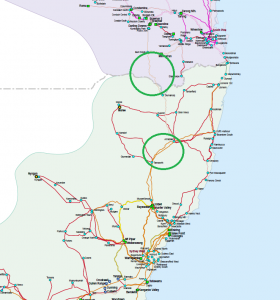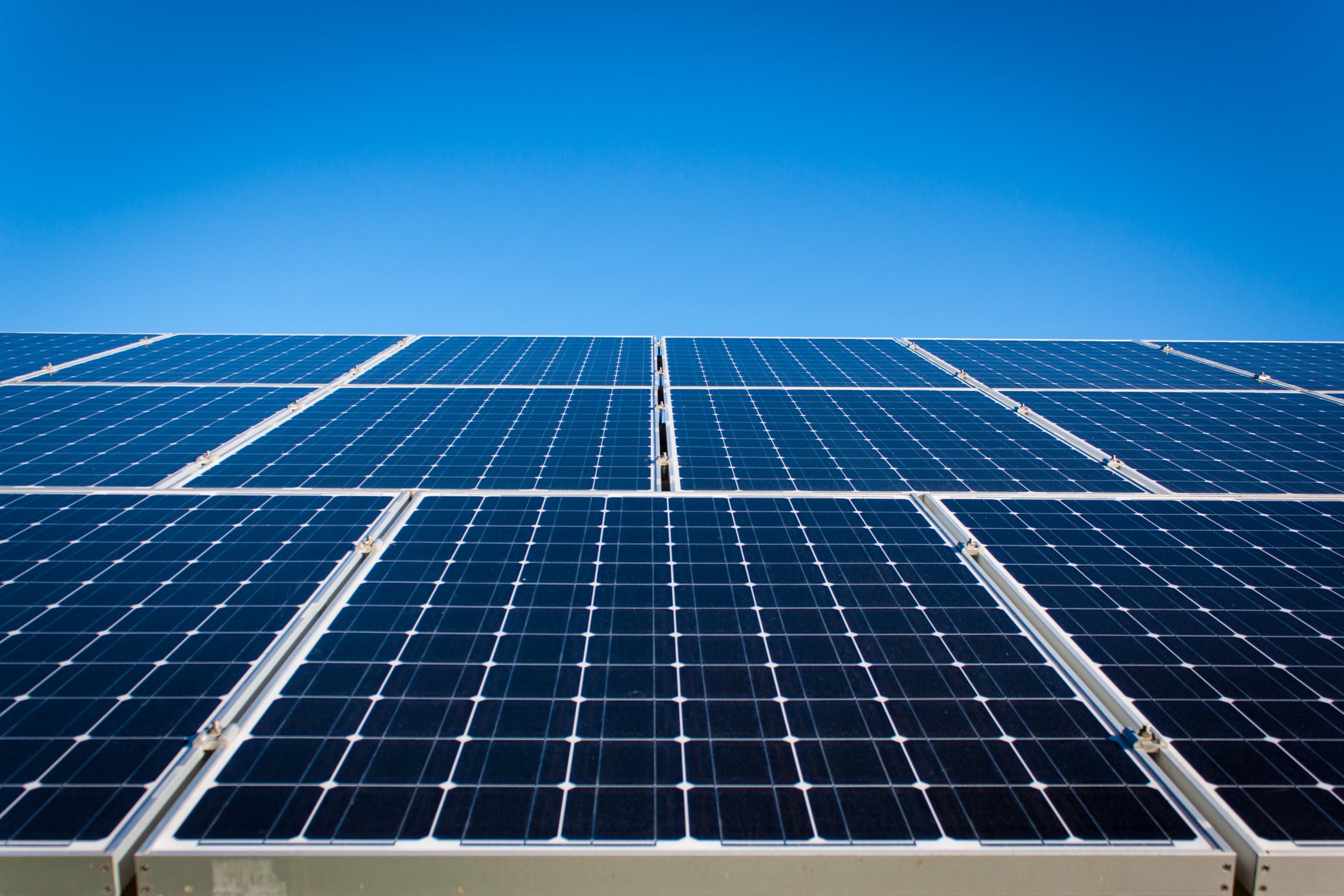In a media statement released 30 August, the Queensland Government confirmed their intention to establish CleanCo, Queensland’s third publicly owned electricity generator. CleanCo will have a strategic portfolio of low and no emission power generations assets, and will build, own and operate new renewable generation. It is understood that CleanCo will take control of assets including Wivenhoe, Barron Gorge and Kareeya hydro power stations and the Swanbank E gas power station, courtesy of a restructure of the two current publicly-owned electricity generators – CS Energy and Stanwell Corporation. CleanCo is expected to be trading by mid-2019.
Loss of critical infrastructure leads to loss of power
On Saturday, two critical lines connecting Queensland to the rest of the National Electricity Market (NEM) were lost resulting in load shedding. In total, New South Wales shed 800 MW of load, Victoria 280 MW and 80 MW in Tasmania. This was predominately industrial load which was reconnected within an hour. Lightning is the most likely cause.
While farmers in Northern New South Wales and Southern Queensland were celebrating much needed rain, the transmissions lines between Bulli Creek and Dumaresq tripped off. At the same time, the line was lost between Armidale and Tamworth in Northern New South Wales. At the same time, South Australia was separated from Victoria. Refer to image below for map reference.
Source: AEMO
AEMO is still investigating the causes, however there is likely to be issues regarding frequency response capabilities as this is limited in region.
AEMO expects to release a full report once they have all the necessary information. At this stage, they are not expecting further loss of load.
If you have any questions regarding the event, call Edge on 07 3905 9220 or 1800 334 336.
AEMO releases the latest Electricity Statement of Opportunity
AEMO released their latest Electricity Statement of Opportunity (ESOO) earlier today. Unlike the previous ESOO and the more recent Integrated System Plan (ISP), AEMO is now expecting a heightened probability of the reliability standard not being met. The ISP was released only two months ago and showed that it was highly improbable that the reliability standard would be breached. The reliability standard is a technical standard which basically mandates that no more than 0.002% of demand in a given region can go unmet in a financial year.
The reliability of the system raised two questions:
- Why did AEMO rush through new legislation which allows it to spend money on the Reliability and Emergency Reserve Trader (RERT) scheme?
- What really is the point of the reliability guarantee in the National Energy Guarantee (NEG)?
AEMO managed to by-pass normal rules for changing regulations in the National Electricity Market earlier in the year. This was done to allow an extension of the very expensive RERT scheme. At the time, it was criticised by some parties that normal due process was not followed particularly given that AEMO themselves were not forecasting the need for the RERT. Despite the concerns, the changes to the rules were passed and AEMO was provided the extra powers to be the reserve trader. Now, somewhat conveniently, they expect that they need those powers, giving a 20% chance that the reliability standard cannot be met without it in Victoria during the FY18-19 (as shown below). It is expected that Victoria will only just scrape in under the reliability standard as it is.
Source: AEMO
On the second point, it is assumed that AEMO did not expect a change in Government. Just as the reliability obligation was being questioned in the NEG, AEMO is able to show that in FY21-22, or 3 years time, i.e. the first year the reliability obligation could trigger, Victoria will not meet the reliability standard. This means that AEMO can ask for the reliability obligation to be triggered if their forecast persists. It should be noted that New South Wales is not far behind with a breach of the standard in FY23-24.
AEMO has increasingly been intervening in the market and it looks like it continues to build a case to move towards a more centrally controlled market. For now, it may have to wait, with NEG as the policy looking to be political poison. Perhaps today’s resignation from Andy Vesey (CEO of AGL) comes more from the ESOO than the political landscape.
If you have any questions regarding AEMO’s ESOO or how you can best position your company in response to the changing energy market please get in contact with Edge on 07 3905 9220 or 1800 334 336.
Additional Small Scale Solar Coming to Victoria
The Victorian Government has announced that it will offer half priced solar panels to 650,000 households over the next 10 years.
This scheme, known as The Solar Home scheme, is currently valued at $1.24 billion and is open to owner-occupied homes with:
- A combined household income of less than $180,000 per year; and
- A home value of up to $3 million.
Households who are unable to install solar panels can instead choose to get a $1,000 rebate by changing their current hot water system to a solar hot water system. The solar hot water rebate is open to up to 60,000 homes.
How will this impact the market?
2017 had the highest rate of installation of rooftop solar and 2018 is on track to break this record. The additional demand created by the Victorian scheme could increase the number of certificates, and therefore the obligation for retailers to purchase certificates. This cost is likely to be passed through to consumers. In the short term, it could put downwards pressure on the certificate prices, however any reduction will be short lived as the Clean Energy Regulator adjusts the surrender target, matching demand with supply.
If you would like to understand how this may impact your portfolio please contact Edge on (07) 3905 9220 or 1800 334 336.
Changes to the National Energy Guarantee
The Prime Minister Malcolm Turnbull has, once again, made last minute changes to the National Energy Guarantee (NEG).
When the states threatened to walk away from the NEG, Mr Turnbull responded by making the emissions target regulated rather than legislated. This means that a minister is able to change the target without the support of the parliament. Over the weekend, Mr Turnbull came under pressure internally with several backbenchers, led by former Prime Minister Tony Abbott, wanting to get rid of the targets all together.
A number of changes to the NEG were announced on Monday 20 August, 2018. These changes include providing additional controversial powers to the ACCC where they will have the ability to:
- Force power stations to stay online; and
- Force divestment of companies.
Mr Turnbull also reverted to making the emissions target a legislated target, however conceded that the current parliament was unlikely to agree on a target. Mr Turnbull has urged for the NEG to go ahead with an emissions target being set some time in the future once there is a possibility of agreement.
The centrepiece of the NEG was supposed to be certainty. If the current Government is unable to set an initial target even at the current international commitment, it is difficult to see investment flowing from the NEG. The additional powers of market intervention will also be looked on very sceptically from the outside. ACCC was opposed to AGL buying generation in New South Wales and now they may get a vehicle for forcing a divestment.
In the short term, it is unlikely that Labor will want to agree on the NEG or anything else which will put this to rest as the political fallout continues for the Coalition.
If you would like to know more about the NEG, call Edge on 1800 334 336 or 07 3905 9226.
National Energy Guarantee Update
Yesterday the COAG Energy Council released a draft of the proposed changes to the National Electricity Law that would implement the National Energy Guarantee (NEG).
The draft Bill sets out:
- Who is liable under the emissions reduction and reliability requirements;
- The key aspects of the emissions and reliability requirements;
- The compliance and penalty framework;
- The additional functions and powers of the Australian Energy Market Commission (AEMC), the Australian Energy Regulator (AER), and the Australian Energy Market Operator (AEMO) to support the implementation of the Guarantee; and
- A new emissions objective, applicable to the emissions requirement, to guide rule-making by the AEMC and the exercise of related functions and powers by the AEMC, AEMO and AER.
Stakeholders are encouraged to make written submissions on the draft Bill by 12 September, 2018. Submissions will be published on the COAG Energy Council’s website, following a review of claims for confidentiality.
If you would like further information please get in contact with your Portfolio Manager or follow this link to the COAG Energy Council website.
Price of Utility Scale Solar Being Questioned
The engineering company, RCR Tomlinson, went into trading halt on July 30, 2018 and its CEO, Paul Dalgleish, has stepped down. The trading halt is due to an investigation into cost blowouts for unspecified projects, which will hurt the FY18 annual profit.
The deputy state secretary of the Queensland and NT Electrical Trades Union, Peter Ong, has stated that RCR has been undercutting other bids by as much as $30 million when bidding for utility scale solar project. Peter Ong’s major concern is the use of cheaper labour to try and make up the difference.
For the broader market, if RCR have been under-pricing the engineering cost of installing utility scale solar, there could be an increase in the expected price of new utility scale solar. Citigroup warned that the recent solar farm built for Sun Metals may have had a cost blowout by as much as $7 million.
RCR has not confirmed that it is the utility scale solar which has led to the cost increase.
If you would like to understand how this may impact your portfolio please contact Edge on (07) 3905 9220 or 1800 334 336.
NEG Moves To Next Stage
The Council of Australian Governments (COAG) meeting has ended and the Federal Energy Minister Josh Frydenberg will be able to move the National Energy Guarantee (NEG) to the next stage.
The next stage will involve taking the legislation to the Coalition party room on Tuesday. If the party room agrees with the draft legislation, there will be a teleconference with COAG and the draft legislation will be released for public consultation.
Minister Frydenberg still believes that legislation will pass in 2018 for a 2020 start. Federal Labor, the two Labor held states (Victoria and Queensland) as well as the Australian Capital Territory are still sceptical. Particularly, Victoria has concerns that the NEG doesn’t seem to support lower power bills, emissions reduction and more renewable energy jobs for the state.
Further details are expected to be made available on Tuesday.
If you would like to know more about the NEG, call Edge on 07 3905 9220 or 1800 334 336 or speak with your Edge Portfolio Manager.
NEG decision to be placed on hold until next week
According to the Australian Financial Review, the Queensland, Victoria and Australian Capital Territory leaders have stated that they will not sign off on the National Energy Guarantee (NEG) at this Fridays COAG Energy Council Meeting. They have provided their support in principle however are waiting until after the NEG has been through the Coalitions party room on Tuesday next week before providing agreement. Premier Palaszczuk claimed that as of yesterday, the states had not seen the legislation that they would be asked to support on Friday. Tuesday next week has been indicated as the earliest that a decision will be made by the Labor state and territory leaders.
Another debate is also underway in regards to the emissions reduction target to be set by regulation or legislation. If set by regulation a minister would be able to change the target without the approval of parliament. If set by legislation, any changes would have to be passed by both the lower and the upper house providing additional investment security. The Labor states are pushing for regulation so the targets can be changed as soon as possible. The Commonwealth Government wants the target to be legislated as was done by the previous Labor Government when agreeing the Renewable Energy Target.
If you would like to understand more about the NEG and the potential impact it may have on your energy portfolio moving forward, please visit edgeenergyservices.com.au or alternatively you can call one of our team directly on 07 3905 9220 or on 1800 EDGE ENERGY.







